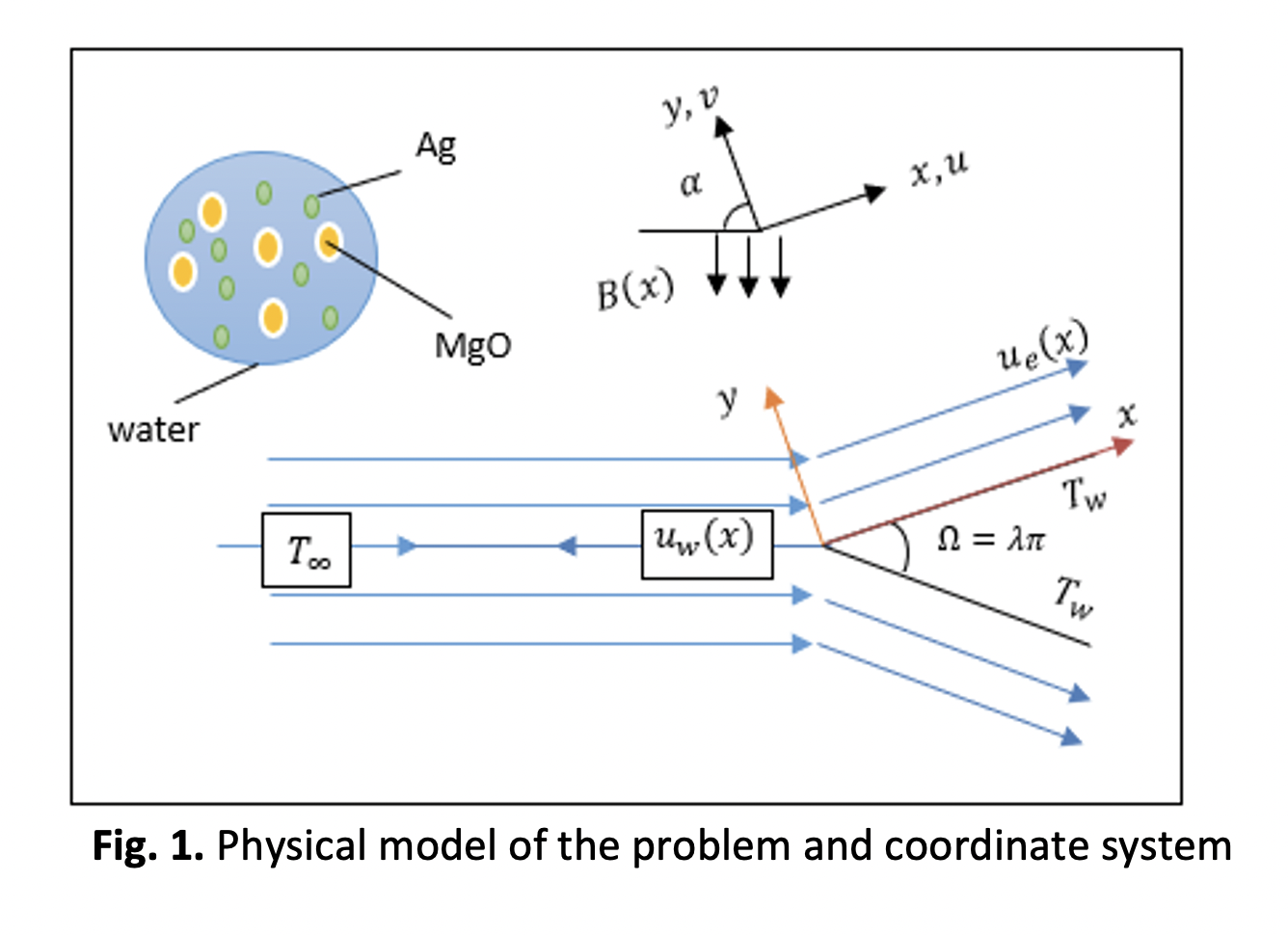Radiation Effects on Inclined Magnetohydrodynamics Mixed Convection Boundary Layer Flow of Hybrid Nanofluids over a Moving and Static Wedge
DOI:
https://doi.org/10.37934/araset.28.3.6884Keywords:
Magnetohydrodynamics, Mixed Convection, Hybrid Nanofluids, Radiation, Constant Wall TemperatureAbstract
Nowadays, hybrid nanofluids play an important role in heat transfer systems. They are a good alternative to increase the efficiency of heat transfer and save the energy. Thermal radiation and mixed convection flow of hybrid nanofluids past a permeable moving and stationary wedge were studied in this research. This research uses water as a base fluid to investigate the effects of silver (Ag) and magnesium oxide (MgO) nanoparticles. Similarity transformation techniques are used to convert the partial differential equations of hybrid nanofluids to ordinary differential equations, which is then solved numerically by applying the implicit finite difference Keller box method. The results of the research are illustrated graphically to show the behavior of velocity and temperature profiles, as well as skin friction and Nusselt number. Increasing the parameters of the aligned magnetic field, magnetic field interaction, mixed convection, and wedge angle parameter results in higher velocity profiles but lower temperature profiles. As the radiation parameter and the nanoparticle volume fraction increase, the temperature rises and the velocity decreases. With the exception of the radiation parameter, the skin friction and Nusselt number increase as the alignment angle of the magnetic field, the interaction of the magnetic field, the mixed convection, the wedge angle parameter, and the volume fraction of nanoparticle Ag and MgO rise. As a result of these findings, the velocity profiles and Nusselt numbers of moving wedges are higher, but the temperature profiles and skin friction are lower than those of stationary and moving against flow wedges. In addition, a comparison with previously published research is presented, with excellent agreement discovered. The results of this research will contribute to the field of knowledge in mathematics by bringing additional information for mathematician interested in future research on hybrid nanofluids.
Downloads





























